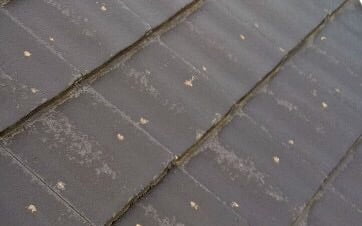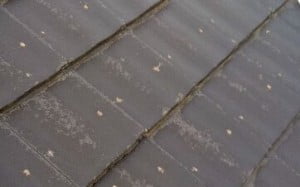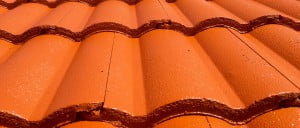The Problem with Flat Profile Roof Tile’s
The Problem with Flat Profile Roof Tile’s
Flat profile roof tile’s are becoming increasingly popular due to there sleek, modern look. However, many people are unaware that flat roof tiles are more likely to allow water into your home.
Traditional roof tiles, such as the ones in the photo, were purposefully designed to be contoured, and with good reason. The curved shape ensures that the edges of every roof tile finishes at the highest point where it joins the neighboring roof tile. There are never any joins in the troughs, where most of the rain water will travel through. The design is fairly common sense in that it minimizes the amount of water moving past the joints, subsequently minimizing the amount of water running between the tiles and into your roof cavity.
Traditional contoured terracotta roof tiles are designed to be laid in a staggered pattern between each row . The contoured concrete roof tiles can be laid either in a straight or staggered pattern. When the roof tiles are laid these ways the water is always drained away from the joins of the roof tiles, minimizing the chance of water leaks into your roof.
Then flat roof tiles began production and the tile manufacturers would nominate a ‘cross bond’ laying pattern only. No straight laying.
Why?
On a flat roof tile, rainwater is spread evenly over the surface of the tile. So, the lap gets as much water as the rest of the roof tile. The design of the water (drainage) course on the lap becomes critical, now that there is much more water to be carried… But if all the roof tiles are laid straight, the water courses will line up. This forces the downstream tile to pick up the water flows from the adjacent upstream tile at the drainage course. And as we go down the roof, the water load gets worse with each tile and it will overflow the water (drainage) course… causing leaks.
Most (if not all) roofers will cross bond flat concrete (and terracotta) roof tiles – because the manufacturer tells them to. So, the laying pattern is not usually an issue. It is what the laying pattern does to the roof tile that is causing a lot of roof leaks in Sydney.
Firstly, the design of the nail hole location (roof tiles are secured to the battens using nails). On old production runs of some flat profile roof tiles, the nail hole was located at the centre of the roof tile. This means that the tile that is laid on top on the next row has the drainage course resting directly on the nail. Roofers never bang the nails flush to the top of the roof tile because of the danger of splitting the tile. So, the fragile water course sits on the head of the nail.
Any load on the tile and the drainage course snaps. See the picture above.
Sometimes, the fragile water course cracks even without the aid of a nail.
Now, you have a heavy water load on the drainage course due to the tile design – plus the broken water course (that is hidden and hard to see). The two add up to a steady trickle of water into the roof space when ever there is heavy rain.
Check out the video to see how this happens and what the new roof tile design looks like (to overcome the nail issue):
There are other problems with flat roof tiles. And the main one is what happens when the roof terminates at walls…
flat roof tile leaking fault at side wall
water will run under the lead apron flashing into the roof cavity
Water seeps under the lead apron flashing along a side wall and this is not a problem with a contoured roof tile. The seepage falls into the trough. But with a flat roof tile, the seepage can travel all the way across the roof tile (under the lead apron flashing) and dribble into the roof cavity.





Leave a Reply
Want to join the discussion?Feel free to contribute!